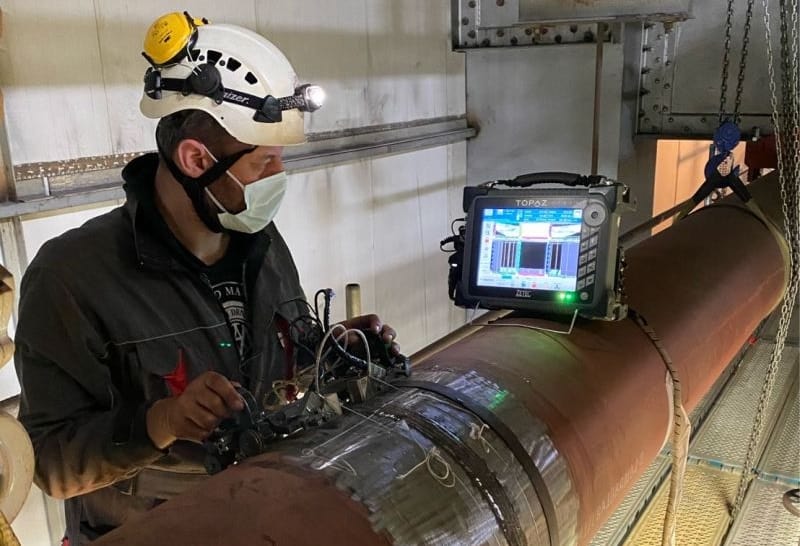Safeguard Your Financial Investment: Thorough Pipeline Welding Inspection for Satisfaction
Safeguard Your Financial Investment: Thorough Pipeline Welding Inspection for Satisfaction
Blog Article
Comprehensive Summary of Pipe Welding Assessment Treatments
In the world of pipe construction, guaranteeing the honesty and safety and security of bonded joints is paramount. Pipeline welding inspection procedures play an important function in ensuring that welded connections meet rigorous market requirements and specs. From careful pre-welding assessments to thorough post-weld analyses, a distinct assessment process is vital for preserving the structural stability of pipes. Recognizing the details of welding examination treatments is not just a governing need but likewise a basic element of promoting the integrity of these vital frameworks.
Pre-welding Examination Preparations
Prior to commencing the welding procedure, comprehensive pre-welding examination preparations are important to make sure the integrity and top quality of the weld joint. These preparations entail a precise examination of the products to be welded, the welding devices, and the workplace. Firstly, the products must be evaluated for any defects, pollutants, or inconsistencies that can compromise the weld. This consists of checking for appropriate product qualities, measurements, and surface conditions. Pipeline Welding Inspection. In addition, the welding tools needs to be examined to validate that it remains in good working condition, adjusted appropriately, and ideal for the specific welding process. Any type of concerns with the tools should be resolved promptly to protect against problems in the weld. The job setting must be assessed for tidiness, proper ventilation, and safety steps to guarantee a favorable setting for the welding operation. By conducting complete pre-welding assessment prep work, prospective problems can be identified and dealt with at an early stage, causing top notch and trustworthy weld joints.
Welding Treatment Qualification
Thorough pre-welding assessment preparations lay the structure for the crucial procedure of Welding Procedure Credentials, guaranteeing the honesty and quality of the weld joint. Welding Treatment Qualification (WPQ) is a crucial action in the welding procedure that entails screening and licensing welding procedures to assure they satisfy certain standards and requirements. The WPQ process commonly includes welding treatment requirements advancement, welding treatment credentials testing, and paperwork of the outcomes.
During welding procedure requirements development, vital information such as the welding process, welding materials, joint style, and welding parameters are defined to produce a thorough procedure. Consequently, welding treatment qualification testing is carried out to confirm the suggested treatment's integrity. This testing usually involves welding test discount coupons that are subjected to various mechanical and non-destructive tests to analyze the weld's quality and adherence to the specified requirements.
In-process Weld Assessment
Throughout the welding procedure, in-process weld inspection plays a vital duty in ensuring the quality and integrity of the weld joint - Pipeline Welding Inspection. This type of examination involves monitoring the welding specifications, examining the weld grain development, and detecting any possible issues or suspensions as they happen. By carrying out in-process weld evaluations, welding operators can quickly deal with any type of issues that may develop, therefore making certain and stopping additional defects that the last weld fulfills the needed specifications
Typical approaches utilized for in-process weld examination include aesthetic evaluation, fluid penetrant testing, magnetic particle screening, ultrasonic testing, and radiographic screening. In general, in-process weld inspection is crucial for preserving the top quality and dependability of welded pipelines.
Non-destructive Screening (NDT)
Non-destructive Find Out More Screening (NDT) is an important technique employed in pipe welding assessment to analyze the integrity of weld joints without creating damage to the welded structure. By using various NDT methods, assessors can evaluate the high quality of welds and recognize any flaws or suspensions that may jeopardize the architectural sturdiness of the pipe. Usual NDT methods used in pipeline welding assessment consist of Radiographic Screening (RT), Ultrasonic Screening (UT), Magnetic Fragment Testing (MPT), Liquid Penetrant Testing (LPT), and Visual Testing (VT)
RT includes the usage of X-rays or gamma rays to generate pictures of the internal framework of the weld, enabling examiners to find flaws such as porosity, splits, or insufficient combination. Additionally, official source VT involves visual inspection of welds to identify any kind of visible flaws.
Post-weld Evaluation and Documents


Paperwork of post-weld inspection searchings for is necessary for maintaining quality assurance records and making sure conformity with industry pop over to this web-site requirements and regulations. In-depth reports must consist of info concerning the evaluation approaches used, the place and nature of any flaws located, and any rehabilitative activities taken - Pipeline Welding Inspection. Appropriate documents not only functions as a document of the weld's quality however also aids in future upkeep and inspection processes
Final Thought

In verdict, pipe welding inspection procedures play a crucial role in guaranteeing the high quality and stability of welds. Generally, adherence to correct examination protocols is key to the success of pipeline welding projects.
From meticulous pre-welding evaluations to extensive post-weld assessments, a well-defined inspection procedure is essential for keeping the architectural strength of pipes. By carrying out in-process weld evaluations, welding operators can promptly resolve any kind of concerns that may develop, thus ensuring and preventing further issues that the last weld fulfills the needed specs.
Usual techniques utilized for in-process weld examination consist of visual evaluation, liquid penetrant testing, magnetic particle screening, ultrasonic screening, and radiographic testing.Non-destructive Testing (NDT) is an essential approach used in pipe welding assessment to analyze the honesty of weld joints without triggering damage to the welded framework. Post-weld examination entails various approaches to examine the welds for defects, consisting of visual examination, dye penetrant screening, magnetic bit screening, ultrasonic testing, and radiographic screening.
Report this page